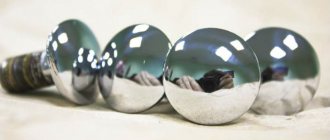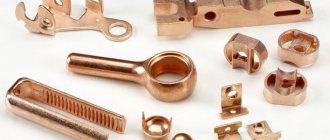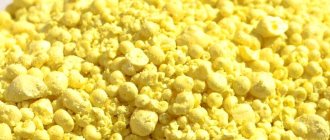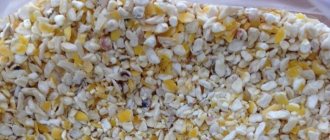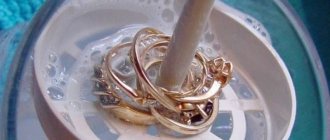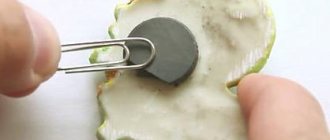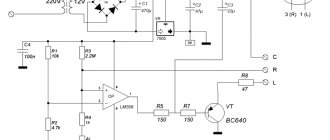In a country house there should always be a maximum of available tools and items that make daily care of the house, garden and vegetable garden easier. For a rural resident, it would be absolutely useful to have a crusher, with which you can grind both hard and brittle materials.
This device is used to destroy stones, crush metal objects, wood, household waste, plastic, etc. This machine is used both in industry and in everyday life.
In the household, it can become a real universal device. During the spring-summer season, experienced and economical summer residents collect pruning fruit bushes and weeds in separate heaps, and then grind this material using a crusher, creating an excellent fertilizer for garden plants and trees.
Coal crusher
Hi all!
A problem has arisen (I bought a coal-fired heating boiler and it requires a fraction of 30-70mm.) And my coal has a regular fraction of 200mm or more! So I wanted to build a crusher, I beg you, if anyone has any ideas, please help me. That no one has any ideas?
Description and operating principle of a jaw crusher. " >
a concrete mixer and several metal blanks (in general, balls are preferable), the crushing time should be determined experimentally
Vidis wrote: a concrete mixer and several metal blanks
This will not be a crusher, but a mill - a bunch of dust (very explosive, by the way) and small fractions. If we take industrial equipment as a basis, the simplest thing is to build a smaller model of a jaw crusher (the movable jaw is made of steel channels welded to each other, the cavities are better filled with concrete for rigidity, the stationary one is reinforced concrete lined with steel sheet) the drive is hydraulic - simpler or eccentric - more productive.
johnlc wrote: the easiest thing to do is to build a smaller model of a jaw crusher
Are you kidding?
With such a jaw - and you need about 250 mm - the result is not a model, but a full-scale crusher, perhaps narrower: the gripping angle cannot be canceled and it would also be good if the plates were corrugated or with surfacing. Kmk, it’s impossible to fit into a ton of metal here. But nothing real comes to mind. kwetkin, You could say how much she will eat, the possibilities of production, maybe what is ready-made in stock.
Borrow a shaker from the builders, make a grate of the required size according to the size of the sole, install it on top of the bunker. Pour the semi-finished product onto the grate and go to battle_! Screener/crusher in one bottle
Malevich wrote: Kmk, you can’t fit into a ton of metal here.
That’s why I proposed to do it – a hybrid with reinforced concrete – the weight will actually be greater, but the price will be less. for a budget option, you can add a type of piledriver falling into the bunker and a grate at the bottom of the desired mesh size.
It’s better to borrow a couple of Tajiks for sledgehammers from the builders. PS, if the boiler does not eat more than 100 kg per day, a sledgehammer and an inclined grate will solve all the problems - at the same time, morning exercise.
The boiler currently eats 3-3.5 buckets per day, but the sledgehammer really sucks. la
kwetkin, What if you make a couple of gears, something like rollers, or make a sprocket for large toothy chains...
emnip coal is a rather fragile but abrasive material.
I propose to discuss a sketch of a small-capacity coal crusher!
As a diagram, it’s good, only in roller rotors the rotor has to be tricky: “> otherwise a large piece won’t fit down her throat. The speed and, accordingly, the power may be lower, but there is no escape from the moments and efforts.
kwetkin, Now, if you hang the upper part of the armor on hinges, and connect the lower part of the armor with a crank to a shaft, with a stroke of 10 mm. This will make it better to chew and not choke. At the crusher below, a comrade threw off the power and speed, and you have some chips for yourself. .
Malevich, I think it’s a great idea about the mobility of the armor, but here’s another question: which pulley to put on the main shaft?
I don’t understand - what is being offered, a hybrid of roller and jaw or purely jaw?
kwetkin wrote: what pulley should I put on the main shaft?
If it's a gear motor: adjust the speed...
Malevich wrote: it is proposed, a hybrid of roller and jaw
-pressure with broach :yu
It's clear. Surely, with the same success, you can seat the rotor eccentrically and get periodic pressure peaks during supply. And there is no need to make an additional movable, highly loaded link. The next step in the same direction is a faceted shaft, then attach teeth to it for better tightening of the material and in the end we will get the construct from post #13. There is no need to expect miracles in this area, and possible designs for mechanical shredders have long been polished to perfection. To begin with, if we are talking about a roller crusher, we need to decide on the size of the rotor: because with a small diameter, a large piece will not fit into its throat. Imagine that an asphalt roller runs over an inch pipe - literally, into a pancake. And if the pipe is half the size of a roller, he will drag/roll it in front of him. The analogy is somewhat arbitrary, but the physical meaning is the same and for the initial pieces of 200 mm, a smooth rotor will require more than a meter in diameter (offhand, I didn’t count). And this is not only the metal itself, but also the corresponding loads in the drive elements. Or make a deliberately large distance to the slab in order to reduce the approach angle, but then the coarseness at the exit may not suit you.
I mean, what's the point? I would like to get away from industrial solutions altogether and closer to a sledgehammer, but as if with an electric drive. Imagine a gutter, the bottom of which is a grate, and a barrel tightly packed with iron scraps (or concrete, or lead shot, or even mercury o_O) can roll along its side walls. The width and depth of the trench are based on the maximum coal size, and the length. let it be three meters to start with. The barrel has two or three welded toothed hoop disks that are more than half the height of the side walls and move inside the trench. To roll the barrel, we will give it axles, which we will connect with a cable (through bearings) to a small winch. We will install the chute with a lift to the winch so that the working stroke is forced, and the return is downhill. You can do it horizontally, but then drag it in both directions. And we kind of went: back and forth, in the manner of that skating rink, but also studded. There are several musical moments here:
- How much weight does a barrel need to crush the product? Don't know. The last time I held coal in my hands was about twenty years ago. It is possible, probably, to carry out some kind of experiment on the spot to find out: say, hinge a strip on an edge and press through a long lever. If it doesn’t work out, the idea goes straight to the trash; It needs to be guaranteed to be fine.
- Barrel weight. The more, the better, but if 200 liters are packed tightly with iron + concrete, it will weigh more than a ton. How to mount it and where to put it if something happens? (With fractions it’s much easier).
- I also don’t know how the coal will split - if large flaky (flat) pieces come out, that’s also bad: they might get stuck between the disks and you’ll have to knock them out with a sledgehammer. Stop! Why discs and not ribs along the barrel? Or individual studs in a checkerboard pattern? In general, ask the price on the spot; but purely speculatively it is difficult to advise something more specific.
Double-roll crusher DV-10.
This crusher is also designed for fine crushing of coal. With an input fraction of 30-40 mm and a gap between the rolls of 1.5 mm, we get an output fraction of 0.1-2 mm. This fraction can be used for the manufacture of carbon filters.
The size of the incoming and outgoing fractions can be adjusted by changing the gap between the rolls. You can learn more about this roller crusher from the article Crusher DV-10. In the photos and video below you can see the process of crushing coal on a DV-10 roller crusher.
Coal crushing is also necessary in the cold season for loading operations. Proper storage and storage of coal is necessary to combat losses in both quality and quantity and is one of the main tasks of coal complexes. Crushing of coal to obtain the required particle size distribution is necessary for transshipment work on unloading coal from gondola cars of a railway train, its processing, storage and loading onto ships or vehicles, which allows reducing costs and increasing turnover at coal transshipment complexes.
The production of crushers is one of our areas of activity. We design and manufacture crushers according to the technical specifications of our customers. The performance of crushers depends on many factors: the crushing material, its size, hardness or plasticity, humidity, and the size of the room for installing the crushers. All this affects the performance of the crusher, its size and, accordingly, its cost.
"Machine Industrial Association" has the technical ability to manufacture various versions of roller crushers in accordance with the technical specifications of our customers. We have the ability to design non-standard equipment for various enterprises in the mining, coal, chemical, and construction industries. The main priority for us is solving non-standard problems within the framework of implementing projects of our customers.
Types of crushers
5 classes of crushers based on the shape of the crushing mechanism :
- Jaw (crushing is carried out by crushing between two cheek plates);
- Conical (crushing occurs inside the conical bowl);
- Roller (the material is crushed between cylindrical rollers rotating towards each other at the same speed);
- Hammer (material is crushed by hammers);
- Rod.
Roller and hammer mechanisms are used for crushing brittle and soft materials, such as coal, chalk, limestone, etc.
Crushers of other classes crush hard materials, for example, building stone.
Different materials require different processing approaches.
- In the case of hard and abrasive materials, the crushing method is used;
- For strong and tough ones - crushing with simultaneous abrasion;
- Soft and fragile - splitting method.
Using crushers, hard and soft rocks, metallurgical waste, plastics, polymers, wood, municipal solid waste and organics are processed.
By design, crushing mechanisms are divided into:
- Knife shredders - used for primary crushing of solid materials (wood, metal, municipal solid waste, rubber, polymers). For subsequent grinding it is necessary to use a different type of mechanism.
- Rotary knife . Typically used for recycling polymers.
- Jaw grinders are used for crushing the most complex and hard materials and for grinding asphalt, reinforced concrete and building stone. It is also possible to successfully grind more fragile materials (glass, ceramics).
- Conical . Used for crushing very durable building materials.
- Roller.
- Hammers are used for crushing fibrous non-solid materials, as well as for processing brick chips, electrical waste, glass and ceramics.
Equipment
Roller and auger crushers (sizers) are designed for crushing coal, crushing ores, including clay or frozen ore, non-metallic minerals and other materials with a compressive strength of up to 150 MPa. Screw crushers (sizers) are used at the stages of coarse, medium and fine crushing. The supply of material can be carried out continuously or periodically.
Advantages of roller crusher:
- Maximum yield of products of a given size class
- Working with materials prone to sticking
- Minimum capital costs for installation. No vibration-resistant foundation required
- Compact, simple design, quick replacement of working tools. Ability to work under rubble
- Low specific energy intensity
- Possibility of installation on stationary, semi-stationary and mobile crushing plants.
Design features of the roller crusher:
- The design of the crushing chamber and the crushing tool attachment system are made depending on the properties of the crushed material.
- The rotation of the rolls is carried out by means of an electromechanical drive. The design uses gearmotors from leading European manufacturers, equipped with frequency regulation, soft start and overload protection.
- The productivity and power of the drive are determined depending on the type and size of the loaded material and the desired size of the final fraction.
- Ease of maintenance is achieved by quickly replacing individual screw segments.
- The use of hard alloys and specially designed bearing units ensures the reliability and strength of the crusher design.
Working principle of auger crusher:
Crushing occurs due to the action of shearing force and traction forces created by the high torque of the rolls at low angular speed. Thus, the specific power consumption and wear of the crushing unit is significantly lower than that of other types of crushers.
The spiral arrangement of crusher teeth distributes the material along the entire length of the rolls. This property also allows pieces of material that exceed the permissible dimensions to be removed from the machine.
Screw-gear crushers provide maximum yield of a commercial product of a given size. For example, when crushing material into a class of -50 mm, the yield of class 25-50 mm is 70-75%.
More than 40 crushers for crushing coal, crushing ore, crushing clay ore, non-metallic materials and other minerals have been delivered to Kuzbass, Khabarovsk Territory, Sakhalin Region, Buryatia, Kazakhstan.
.
ROLLER AUGER CRUSHERS
ROLLER AUGER CRUSHERS
Jaw crushers
Jaw mechanisms are classified as periodic machines.
The stone is destroyed between two plates (cheeks), one of which is movable, the other is not. The cheeks move and crush the material. This is one of the most popular crushing machines. It is used to destroy rocks of any strength and all types of crushing. The design of the crushing plate fasteners makes it easy to replace them if necessary. The permissible size of the material used depends on the width of the receiving hole. When the jaws come together, the material is crushed; when they move away, the material falls to the outlet of the crusher.
The advantages of jaw crushers include reliability, simplicity, ease of maintenance, compactness and a wide range of applications.
Disadvantages: frequency of exposure to the processed material, insufficient balance of moving masses, which creates a lot of noise. To reduce it a little, you can place the mechanism on a heavy foundation and additionally equip it with heavy flywheels.
Cone crushers
To crush material of medium and high hardness, cone crushing mechanisms .
This type of crusher consists of two cones inserted into one another. Moreover, one of them is motionless, and the other makes circular movements. In order to pass unbreakable pieces, the movable cone moves away from the movable one, thanks to a system of spring shock absorbers. The latest generation of cone crushers are equipped with hydraulic pressure. The size of the product can be changed by changing the gap between the cones.
The cone crusher is one of the easiest to operate and reliable units. Used in construction, metallurgy and chemical industry.
Advantages: continuous impact on the material, good balance, high productivity.
Disadvantages: high energy consumption, large dimensions.
Technical characteristics of roller crushers
The double-roll crusher can be installed not only indoors, but also in an open area under a canopy. It is possible to install a two-roll crusher directly in front of the conveyor belt on supports, platforms and foundations.
Double-roll crushers are a very economical device; their use consumes a small amount of electricity. In addition, the two-roll crusher is reliable in use - the mechanism of one of the rolls does not allow uncrushed particles to pass inside.
Impact crushers
Rotary crushers are used to grind small and medium-hard products . Crushing is carried out by blows of special beaters mounted on a rotor rotating around a horizontal axis. The large reserve of kinetic energy allows this model to be used for coarse crushing with a high degree of grinding. Models are divided into single-rotor and multi-rotor. Impact crushers are used to produce concrete aggregates and various sludge materials. Compared to jaw and cone crushers, rotary crushers are a highly efficient type of crushing apparatus.
Nuances of preparation and assembly
- Before actual assembly, do not be too lazy to draw a small drawing - this will clarify certain aspects of the assembly and avoid problems when creating the device.
- For high productivity of the device, it is necessary to install as many cutting disks as possible (up to 25 pieces) with a thickness of 0.1 m.
- When working with harder materials than wood, it is best to use a motor unit instead of an electric motor, as its power is much higher.
- If you don’t want to worry about periodically sharpening the machine’s cutters, purchase wheels with alloy attachments.
- To create pressure on the material during the grinding process, a block should be attached to the structure opposite the hopper.
Hammer crushers
Hammer crushers resemble rotary crushers. The material is crushed by rapidly alternating blows of hammers hinged on a rotating rotor. Hammer crushers crush medium-hard mineral material. They are used in the production of glass and building bricks, for crushing dry clay, coal, and broken bricks. Typically, such a crusher is light in weight and low in cost. There are single-rotor and double-rotor crushers.
Recently, reversible hammer crushers, in which the direction of shaft rotation can be changed, have become increasingly widespread. A significant disadvantage of hammer crushers is the rapid wear of the hammers and their use only for crushing low-abrasive rocks, large dust formation, and the lack of mechanisms to prevent breakdowns when uncrushable parts enter.
The advantages include a high degree of crushing, which avoids re-processing, low energy consumption and light weight, ease of design and maintenance.
How to make a crusher with your own hands
Having basic knowledge of physics, it is quite possible to make a crusher with your own hands. As a rule, a low-power electric motor , usually no more than 1 kW.
There is a technique that helps to design a mechanism with the necessary characteristics. First, you need to decide on the material to be processed.
- In order not to complicate the design, it is better to make a mechanism with one movable cheek . For a fixed cheek, a cast iron sheet is suitable, which is installed at an angle on a solid base. The slope is required to create an upper hole for filling the material. Also, by changing the angle of inclination, you can adjust the crushing gap.
- metal shaft as a movable cheek . It is driven by an electric motor through a belt drive, which is needed to reduce the number of revolutions and increase the load characteristics of the engine. In case of overload, the belt drive will avoid jamming.
- The rotation of the shaft should be directed towards the product filling.
- The crushing parameters change when the lower attachment point of the fixed cheek is shifted.
- The entire mechanism can be placed in one housing, and a hopper can be made on top for loading.
For household use, as a rule, crushers made from improvised materials are used. At its core, it is a container with a shaft mounted on bearings and several knives. The shaft rotates thanks to an electric motor through a belt drive. To regulate the speed of rotation of the shaft, wheels of different diameters are installed.
A common use of such mechanisms in the household is chopping vegetables , herbs, etc. They can also be used in construction, for making gravel or crushed stone.
About the benefits of coal briquettes - conclusions
If we think theoretically and take into account the assurances of coal briquette manufacturers, then in terms of calorific value they should defeat all other types of solid fuel. After all, only pure anthracite is capable of releasing 7.7-8 kW per 1 kg when burned. Firewood and wood briquettes lag far behind in terms of specific heat of combustion, since they emit no more than 5 kW/kg.
But judging by the reviews of users of solid fuel boilers on thematic forums, the demand for briquetted coal is inferior to any type of wood due to the following reasons:
- they burn poorly and give off little heat;
- form a large amount of ash, and even pebbles, repeating the shape of briquettes;
- crumble into dust during transportation;
- They emit an unpleasant odor before and during combustion.
High-quality briquettes (on the right) with their black shine are noticeably different from brown coal fuel, which does not burn very well in heating boilers and furnaces.
If you analyze all the reviews about coal briquettes, it turns out that 70% of them are negative. This is primarily due to the fact that fuel producers are trying to make a profit by using waste raw materials - sludge, charge and other obscene varieties of hard and brown coals. Briquettes pressed from anthracite residues are rare.
This suggests a conclusion: if you want to get good fuel, then use the appropriate raw materials for briquetting with your own hands. When you only have dust and fines of low-calorie coal at your disposal, pressing them is not always advisable. On the other hand, such briquettes can be burned together with firewood, reducing the cost of purchasing them.
(we recommend choosing a device with a distillation column of the brand) - it’s like opening the door to the world of alchemy. Proportions, weights, precise temperatures, bubbles and steam - and all for the sake of the treasured drink, branded, pure, and so that your head doesn’t hurt the next morning. And in the business of moonshine, additional methods of purifying moonshine have always been helpful. The most common and safest one for this task is charcoal. But not simple, but active (activated). If for some reason you have not found one that is specialized for these purposes, then you can get by with ordinary charcoal. Simple barbecue charcoal in itself is not active, and yet its use is possible after some preparation. Below we will talk about how to properly clean moonshine with charcoal for barbecue (barbecue) at home.
Which charcoal is best for cleaning moonshine?
You need to understand that charcoal for barbecue, firstly, is not certified, and secondly, it may contain completely non-food additives, for example, substances that simplify ignition. To clean moonshine with charcoal for barbecue (barbecue) from smell and fusel oils, only natural birch charcoal, which does not have any other additives in its composition, is suitable. If this point can be verified, and the manufacturer can be trusted in what he wrote on the packaging, then charcoal is suitable for you. Next, in order to use barbecue charcoal to clean alcohol-containing liquids, this same charcoal must be activated. Activation is an increase in the number of pores in coal, that is, its forced cracking. In regular barbecue coal there are few pores and they are small in size. Such coal is capable of “taking away” few impurities from the solution. But the more “holes” and the larger their sizes, the more “fuzzy” coal is able to adsorb. It has also been established that the particle size of activated carbon for its best performance should not exceed 2-3 mm.
How to grind charcoal to clean moonshine
Birch charcoal is placed in a durable bag (a woven synthetic one made from granulated sugar is perfect). Take a hammer and, orienting it flat, break the coal. It is best to do this procedure outdoors and in a respirator: there will be a lot of dust. However, the task can be simplified: to activate the coal, you will need to boil it with water, so you can start grinding after it has been boiled and well saturated with water - there will be almost no dust. Next, the crushed coal is poured into a colander placed over a basin or pan. The dust will be sifted out, and the necessary particles will remain in the colander.
Instructions for activating carbon
The crushed (or not yet crushed) coal is placed in a pan of water and boiled for an hour. Then the water is drained, the wet coal is laid out on a baking sheet or cast iron frying pan (uncrushed coal is crushed before this) and sent to the oven preheated to maximum for an hour and a half. When the coal begins to crackle and the smell of coal is clearly noticeable, turn off the oven. The cooled coal is ready for use. Check - it should sizzle when you drop a piece into the water.
How much coal is needed to clean moonshine?
For simplicity, let's place the data in a table:
There are two ways to purify with charcoal: infusion and filtration. The first is more effective, but the second is also widely used. When infusing, the coal is placed in the distillate, stirred and left under the lid. The charcoal is infused with alcohol for no more than 20 minutes. The liquid is separated from the coal by filtration through cotton wool. If you keep charcoal in alcohol for longer, unpleasant substances (aldehydes) are formed.
The funnel is used as follows: the outlet hole is covered with cotton wool, and coal is poured on top. Strain the distillate 2-3 times without changing the coal.
Crushers are used to crush rocks and stones. They act by rubbing, crushing, splitting, hitting blocks and pieces against each other. In the domestic sphere, a coal crusher is more common.
It is necessary primarily for grinding large pieces of coal for combustion in various types of furnaces and forges. Some crushers have a special conveyor that automatically delivers the finished fuel to the furnace.
